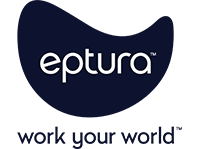
For facility and workplace leaders, the solution isn’t just more software. In fact, 50% of businesses already have an average of 17 standalone worktech systems, and 37% are paying 11 or more full-time employees to collate, analyze, and report on the data, according to Eptura’s 2025 Workplace Index report. Instead, industry leaders are encouraging them to start thinking strategically.
Welcome to our monthly deep dive into important industry trends for workplace and facility management (FM) professionals.
What is strategic thinking in business?
Strategic thinking is a high-level, forward-looking approach that helps organizations identify challenges, opportunities, and the best paths to achieve their objectives. It involves a broad perspective, an understanding of the external environment, and the ability to anticipate and adapt.
Creating a vision and setting goals
Strategic thinking starts with defining a clear vision and setting goals. A vision provides a broad, aspirational direction that guides all strategic decisions and actions. Goals, on the other hand, help you break down this vision into actionable and trackable objectives. By ensuring that goals are specific, measurable, achievable, relevant, and time-bound, organizations can create a roadmap that is both realistic and ambitious. This approach helps to focus efforts, allocate resources effectively, and measure progress, ultimately leading to the successful realization of the organization’s strategic vision.
Capturing data and conducting analysis
Conducting thorough analysis is a critical component of strategic thinking and involves gathering and interpreting data to understand the current landscape and identify key trends and changes. Data-driven analysis, including reviewing metrics from various systems, helps to identify areas for improvement and inform strategic decisions. By regularly analyzing this information, organizations can make informed choices that align with their goals and adapt to changing conditions.
Investing in innovation
Innovation creates a culture of creativity and continuous improvement to find new and better ways to achieve organizational objectives. Innovation can take many forms, from adopting new technologies to rethinking traditional processes. A proactive approach ensures that the organization remains competitive and relevant in a rapidly evolving environment. Innovation also helps to address emerging challenges and capitalize on new opportunities, making the organization more resilient and adaptable.
Emphasizing adaptability
Adaptability means being open to change and ready to pivot when necessary to stay aligned with the organization’s vision. The landscape is constantly changing, with new technologies, regulatory requirements, and stakeholders. By being flexible, organizations can quickly respond to these changes and adjust strategies, including being prepared to modify existing plans, implement new solutions, and continuously refine processes.
What do workplace leaders need to know about strategic vision and goals?
The role of facility management and corporate real estate leaders is evolving, and there’s now more of a focus on creating spaces that better support a range of larger organizational goals.
In the episode “’A Better, Positive Outlook’ – Life Sciences, Architecture, and Workplace Strategy,” Daniel Castner, AIA, LEED AP, and principal and director of the life science practice at Mancini Duffy, talks about how facility management has moved from focusing on small details to the trying to see the big picture.
“It used to be the discussion was more about is it the right temperature? There’s a water leak, so how can we respond to something, you know, in a reactive way,” he says. “But now I think things are shifting and there’s much more big picture focus on whether it’s recruiting and retention or sustainability and providing a space that considers, you know, the environment and the world around us.”
There’s also a new focus on designing spaces that are not only functional but also enhance the workplace experience to improve productivity, attraction, and retention, he says.
“In the case of me working in life science, I think a lot about wellness and how a company may be coming up with a cure for cancer, but they also need to come up with a workplace that responds to keeping their employees healthy at the same time,” he says.
Employee wellbeing isn’t the only larger organizational goal workplace leaders should consider when designing workspaces. It’s all connected, explains Sabrina Pagani, principal and interiors practice leader at AECOM, in the episode “’Everything Begins With Trust’ – Interior Design and Creating Workplace Environments Where People Thrive.”
“Place can’t be thought of as separate from policies, procedures, and behaviors of the people that occupy it,” she says.
Implementing your vision starts with understanding other people’s goals
In the webinar “Unified vision: Securing buy-in for streamlined operations,” co-host Matt Tucker, director of research at IFMA, explains why you need to consider other people’s vision and goals when trying to implement change.
Building effective stakeholder buy-in requires a holistic approach that includes understanding organizational goals, aligning metrics, and fostering cross-functional communication.
“If you need investment or you need to establish the ROI of something, you’ve got to be able to liaise with the finance director and understand what their primary motives are and how you can speak in financial terms to get their interest,” he says.
Support from higher up in the organization is critical for success, says Erik Zink, vice president of strategy and mergers and acquisitions at Eptura and co-host in the same webinar. “Without good solid c-suite sponsorship, I’ve seen global implementations completely fall apart into single country instances, and a lot of time, effort, and money wasted.”
Being strategic can mean starting small
Strategic thinking doesn’t always require sweeping changes. Often, the most effective strategies begin with small, manageable steps. As a facility or workplace leader, you can start by identifying a few key areas where incremental improvements can make a significant impact. For example, optimizing the layout of a single meeting room or implementing a more efficient desk booking system can enhance productivity and employee satisfaction without overwhelming your resources. These small wins can build momentum and provide valuable insights that inform larger, more comprehensive changes. By starting small, you can test new ideas, gather feedback, and refine your approach before scaling up, ensuring that your strategic initiatives are both effective and sustainable.
“Start small with whatever you’re doing. Start small scale and then scale up,” advises Tucker
Stay on top of the trends in intelligent worktech and facility management
Workplace and facility management are constantly evolving with new technologies, regulations, and best practices. Industry professionals always have something new to learn.
For more videos, podcasts, and webinars to keep you updated on the latest trends, visit Eptura’s resource page.








